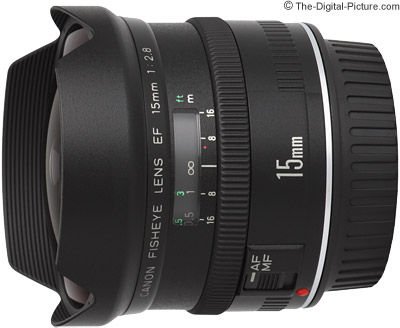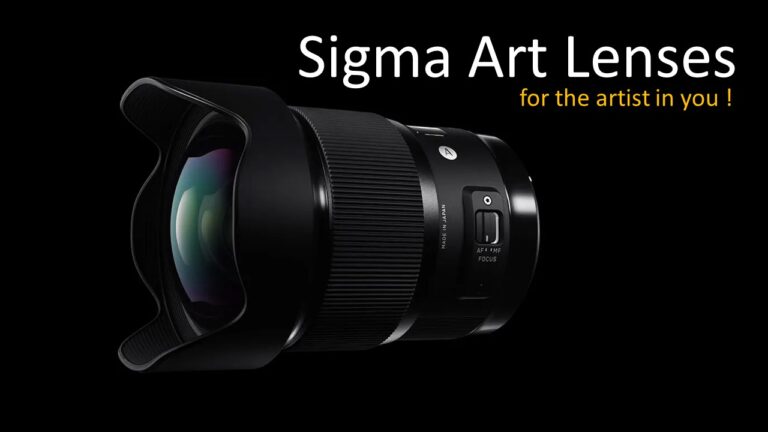Welcome to our blog post on the world of Canon fisheye lens. Fisheye lenses are a unique and versatile type of lens that capture a wider field of view than traditional lenses, resulting in a distinct and distorted image.
Canon offers a variety of fisheye lenses that cater to different needs and preferences of photographers. In this post, we will dive into the world of fisheye lenses, specifically focusing on Canon fisheye lenses, and explore the different options available, their key features, and tips for capturing stunning fisheye images.
Whether you’re a professional photographer or just starting out, this post will provide valuable information on how to unleash the full potential of fisheye photography with Canon lenses.
Understanding Fisheye Lenses

How fisheye lenses work
Fisheye lenses are specially designed to capture a wide field of view, often up to 180 degrees or more. They use a complex combination of curved elements and specialized coatings to produce the distinctive, distorted image that is characteristic of fisheye photography.
Characteristics of fisheye lenses
1. Distortion: One of the most notable characteristics of fisheye lenses is the distortion they produce in images. Straight lines appear curved and objects in the center of the frame appear larger than those on the edges.
2. Field of view: Fisheye lenses offer an extremely wide field of view, allowing you to capture more of a scene in a single image.
3. Aperture and depth of field: Fisheye lenses generally have smaller apertures than other types of lenses, which can limit the amount of light that enters the lens and affect the depth of field in an image.
Comparison to other types of lenses
Fisheye lenses differ from other types of lenses in terms of their wide field of view and distortion. They are unique in their ability to capture a scene in a way that other lenses cannot. However, they are not as versatile as other lenses and are best suited for specific types of photography such as landscape, cityscape, and action sports.
Fisheye vs Wide angle lenses
Fisheye lenses and wide-angle lenses are both designed to capture a wide field of view, but they differ in terms of the type of distortion they produce and their intended use.
Fisheye lenses are known for the distinctive, distorted image they produce. They have a unique ability to capture a wide field of view, often up to 180 degrees or more, with straight lines appearing curved and objects in the center of the frame appearing larger than those on the edges.

They are best suited for specific types of photography such as landscape, cityscape, and action sports.

Wide-angle lenses, on the other hand, have a wider field of view than standard lenses but produce less distortion. They are intended for a more general use and can be used for landscape, architectural, and interior photography.
Wide-angle lenses are great for capturing a sense of depth and space in a scene, making them popular among photographers who want to include more of the background in their shots.
In summary, Fisheye lens is a specialized lens that gives a unique and distinctive image, while a wide-angle lens is a more general-purpose lens that captures a wide field of view with less distortion.
Best Canon fisheye lens choices in 2023
#1 Canon EF 8-15mm f/4L Fisheye USM
This is Canon’s flagship fisheye lens, offering a 180-degree angle of view. It is a full-frame lens and can be used on both full-frame and crop-sensor cameras. It has a fast f/4 maximum aperture and an ultrasonic motor for fast and quiet autofocus.

This lens is a popular choice among photographers in various fields, including travel, landscape, commercial, advertising, and sports, as it allows them to capture unique circular or full-frame fisheye images that can add a creative touch to their work
#2 Canon EF 15mm f/2.8 Fisheye
This is a more affordable option for those looking for a fisheye lens. It has a 180-degree angle of view and is designed for crop-sensor cameras. It has a fast f/2.8 maximum aperture and a manual focus ring for fine-tuning focus.

The Canon EF 15mm f/2.8 Fisheye Lens is a highly sought-after lens among photographers for its intentional distortion effect. One of Canon’s two EF lenses that feature this effect, it offers a unique perspective for capturing images.
The heavy barrel distortion from the 15 Fisheye creates a special effect that is popular among photographers, although it should be used with caution to avoid overuse.
With digital capture, it is possible to use fisheye-to-rectilinear conversion software to create a corrected image equivalent to what a 12-13mm rectilinear lens would produce, but this requires some extra post-processing work and an understanding of the final result.
In terms of build quality, the Canon EF 15mm f/2.8 Fisheye Lens is reasonable. It has a metal mount that indicates it is not a budget lens, although the focus ring may feel of lower quality. But it is also not an expensive lens.
#3 The Rokinon 8mm f/3.5 HD Fisheye Lens
The Rokinon 8mm f/3.5 HD Fisheye Lens is a popular third-party alternative for those looking for a high-quality fisheye lens at a more affordable price point.
This lens offers a full 180-degree angle of view and is designed for full-frame cameras. It has a fast f/3.5 maximum aperture and manual focus, allowing for fine-tuned control over your images.

The build quality of this lens is solid and it features a durable metal construction. Its unique 8mm focal length allows for even more creative possibilities in your fisheye photography, like getting dramatic landscapes and astronomical shots.
The Rokinon 8mm f/3.5 HD Fisheye Lens is a great option for those who want to experiment with fisheye photography without breaking the bank.
#4 The Meike 8mm f/3.5 Fisheye Lens for Canon
The Meike 8mm f/3.5 Fisheye Lens for Canon is another third-party option for photographers looking for a fisheye lens at a more affordable price point. This lens offers a full 180-degree angle of view and is designed specifically for use with Canon cameras.
It has a fast f/3.5 maximum aperture, which allows for great low-light performance and manual focus, giving you fine-tuned control over your images. The build quality of this lens is good, with a durable metal construction and a solid feel.

Its 8mm focal length allows for even more creative possibilities in your fisheye photography, such as dramatic landscapes and unique architectural shots.
#5 RF5.2mm f/2.8L Dual Fisheye for Canon Mirrorless cameras
The RF5.2mm f/2.8L Dual Fisheye is a high-end fisheye lens from Canon that is designed for use with its EOS R series full-frame mirrorless cameras. It is the world’s first full-frame mirrorless camera lens that offers two different angles of view.
The RF5.2mm f/2.8L Dual Fisheye captures 180-degree 3-Dimensional (3D) stereoscopic visuals by using the parallax of the left and right fisheye lenses. This design enables a single sensor to receive light from both lenses, simplifying the recording of Virtual Reality (VR) videos via a single camera.

It offers a total max 190-degree angle of view, making it a versatile option for photographers looking to experiment with different perspectives. It has a construction of 10 groups and 12 elements with a close focusing distance of 0.2 m or 0.66 ft.
The lens has a fast f/2.8 maximum aperture, which allows for great low-light performance and manual focus, giving you fine-tuned control over your images. The build quality of this lens is excellent
Tips for Using a Canon Fisheye Lens effectively
Using a fisheye lens can open up a whole new world of creative possibilities for your photography. But it can also be challenging to know how to use it properly. Here are a few tips on how to make the most of your canon fisheye lens.
Know your angles of view
Fisheye lenses have a very wide angle of view, usually around 180 degrees. This means that they can capture a lot of the scene in front of you, including the edges of the frame. Be mindful of what is in the frame and how it will look in the final image.
Use the distortion creatively
Fisheye lenses are known for their distortion, which can make subjects appear distorted or stretched. Use this distortion to your advantage by playing with the lines and shapes in your composition.
Get close to your subject
Fisheye lenses are great for getting close to your subject and capturing unique perspectives. Don’t be afraid to get in close and fill the frame with your subject.

Experiment with different apertures
Fisheye lenses often have a fast aperture, which can be used to create interesting depth of field effects. Experiment with different aperture settings to see how it affects your images.
Use a tripod
Fisheye lenses can be difficult to hold steady, especially when shooting at slow shutter speeds. Use a tripod to keep your camera steady and get sharp images.
By following these tips, you’ll be well on your way to getting the most out of your Canon fisheye lens. Remember to have fun and experiment with different compositions and settings to see what works best for you.
Summary
In summary, a canon fisheye lens is a versatile and unique tool for photographers looking to experiment with different perspectives and creative compositions.
Understanding the differences between fisheye and wide-angle lenses, and familiarizing yourself with the various canon fisheye lens options available, can help you choose the best lens for your needs.
When using a fisheye lens, it’s important to be mindful of the lens’ wide angle of view, use the distortion creatively, get close to your subject, experiment with different apertures, and use a tripod to ensure sharp images.
With the right approach and a bit of experimentation, a canon fisheye lens can help you take your photography to the next level.



